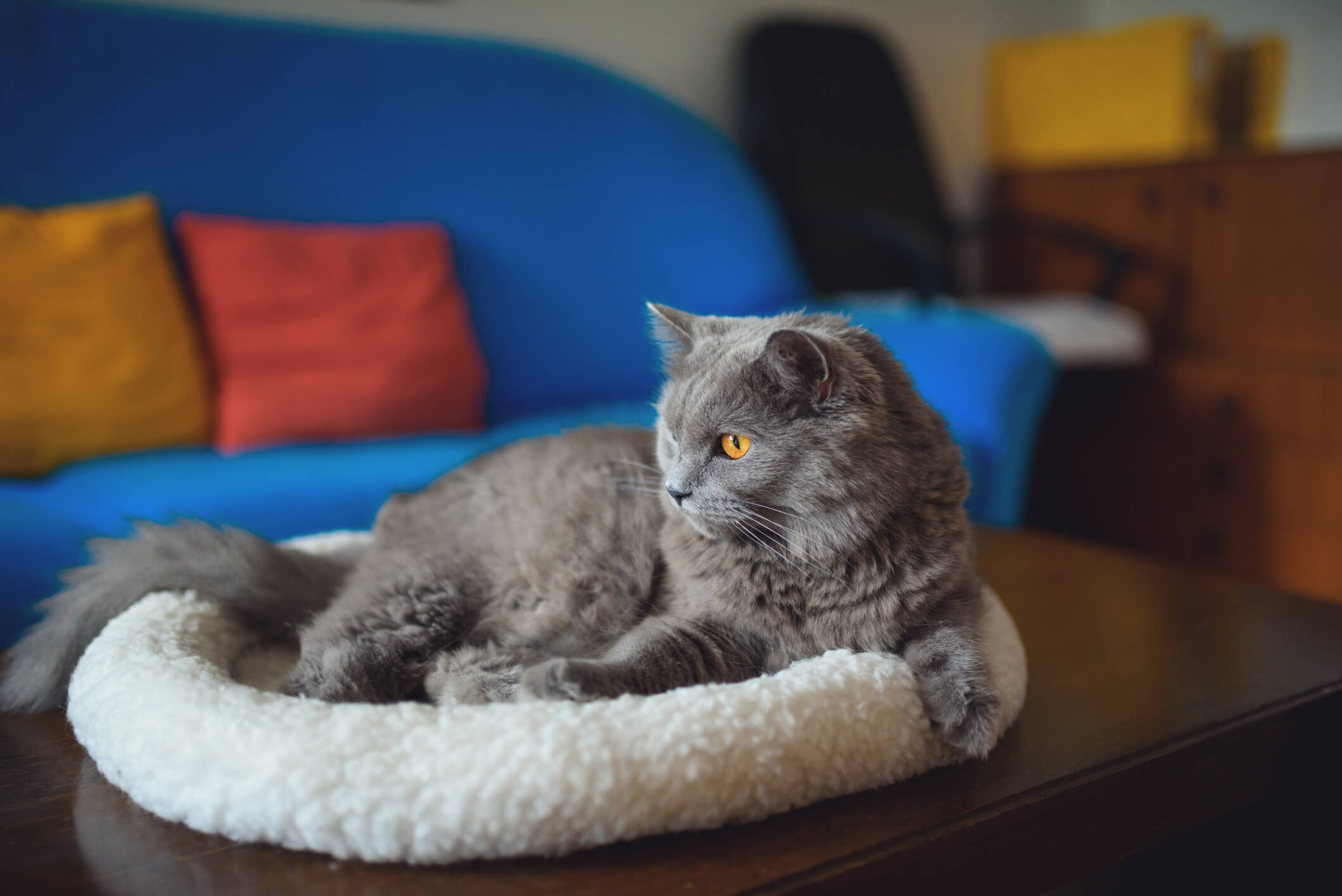
Your Cat's Reluctance to Jump Might Mean a Painful Joint Issue
Young kitties are capable of some impressive feats. They clear vast expanses with a single leap, nimbly navigating your living room like the jungle cat that they are. But that was years ago—now your fur baby is all grown up and takes things a bit slow. If your cat is avoiding their usual perches, arthritis could be to blame.
Check out the telltale signs of feline arthritis and know when it’s time to call a vet.
Common signs of feline arthritis
The signs of arthritis are tricky to spot in cats. They’re so good at masking discomfort, a cat could easily endure years of arthritis before you realize they need treatment. Although cats don’t like to show weakness, a trained eye can detect the subtle signs of cat arthritis.
Here are the most common ones:
- They don’t jump to high places anymore: Cats are curious creatures who love to explore. They need an enriching environment with various elevations like stairs or the top perch of a cat tree. But as cats get older, many lose interest in jumping up to or down from high places. Arthritic cats usually pick out new resting spots that are easier to access. Pay close attention to changes in where your older kitty snoozes, as this could possibly indicate the presence of arthritis.
- They avoid using the litter box: This symptom is one of the more frustrating ones for cat owners. At first glance, it might seem like your cat is pooping all over the house simply to spite you. Really, avoiding the litter box is a symptom of several ailments, and feline arthritis is one of them. Arthritic kitties might refuse to eliminate in litter boxes if the ledge is too high to climb over. Pet parents can never know for sure what causes inappropriate elimination, so have a vet examine your cat to rule out other potential diseases.
- They favor one leg as they walk: If you look closely, you might notice that your arthritic cat has developed a slightly altered gait. Their legs may appear stiff, or they’ll put more weight on one leg than the other. Every cat is different, so it’s up to the owner to recognize when their kitty’s walking pattern changes.
- They get aggressive when you pet them: Even the most well-tempered cats can become agitated when they’re in pain. Cats with arthritis might snap at owners who pet them near swollen, painful joints. Arthritis can develop anywhere in the body, but cats experience it most commonly in the hips and hind legs. A clear sign of arthritis is when cats enjoy petting time but quickly get defensive when you pet them in the wrong spot.
How to reduce your cat’s arthritis pain
Unfortunately, there’s no cure for feline arthritis. It’s a lifelong condition that vets usually manage with prescribed painkillers, physical therapy and special diets. However, traditional medicine isn’t the only option. You can help an arthritic cat feel more comfortable by implementing these at-home remedies:
- Install ramps or a stepping stool: A little bit of joint pain shouldn’t stop your kitty from enjoying their favorite places! A ramp or stepping stool can help arthritic cats regain access to the couch, bed or window sill. This eliminates the need to jump onto high ledges and prevents unnecessary stress on the joints.
- Buy litter boxes with lower walls: Older cats know where they’re supposed to relieve themselves. The only problem is that swollen joints stop them from climbing into the litter box. Help out your kitty—and save yourself the mess—by purchasing new litter boxes with low walls. This should make it a lot easier for them to climb in and out of the box.
- Put their belongings on one floor: For arthritic cats, stairs aren’t their best friends. Arrange their bedding, litter boxes, toys and food bowls on the same floor of your home. This will greatly reduce the amount of joint pain they experience in their daily routine.
- Ask your vet about healthy weight loss: Cats who are overweight or obese are more likely to suffer from arthritic joint pain. Carrying around all those extra pounds puts a lot of pressure on the leg joints, which can worsen your cat’s symptoms. Ask a vet if your cat needs a restricted diet along with additional exercise. It can be tough to keep arthritic kitties active, but shedding some weight could help in the long run.
Older cats are generally less spry than they were in their golden years. However, that doesn’t mean they’re doomed to a life of moping around. The sooner feline arthritis is diagnosed, the sooner cats can get back to doing what they love most—playing with their favorite human!



